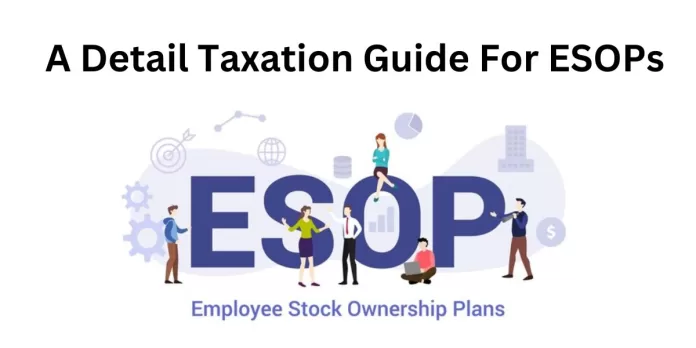What are ESOPs?
An ESOP (Employee Stock Ownership Plan) is an employee benefit plan that gives workers ownership interest in the company in the form of shares of stock. ESOPs are designed to align the interests of employees with those of shareholders, and they can provide a number of benefits to both companies and employees.
Why Company Issues ESOPs?
ESOPs provide employees with a financial stake in the company’s success, which can be a powerful motivator to attract and retain high-performing individuals. ESOPs can be a more cost-effective form of compensation than traditional salary increases, as they are not tied to current cash flow.
ESOPs Cycle:
There are mainly 3 steps of ESOPs,
- Grant
The first step in the ESOP cycle is the grant of options. This is when the company grants the employee the right to purchase a certain number of shares of the company’s stock at a predetermined price, known as the exercise price. The exercise price is typically set below the fair market value of the stock at the time of grant so that the employee has the potential to make a profit by exercising the option.
- Vesting
Vesting is the process by which the employee earns the right to exercise their options. The vesting schedule is specified in the ESOP plan and can be based on time, performance, or a combination of both. For example, an employee’s options may vest over a period of four years, with 25% of the options vesting each year. This means that after one year, the employee would be eligible to exercise 25% of their options, after two years they would be eligible to exercise 50% of their options, and so on.
- Exercise
Once options have vested, the employee can exercise them at any time during the exercise period. The exercise period is also specified in the ESOP plan and can be several years long. When the employee exercises an option, they pay the exercise price for the shares and become the legal owner of the shares. The employee can then choose to hold the shares for the long term or sell them immediately.
Taxation of Employee Stock Options (ESOPs):
Granting of ESOPs – No tax is levied at the time of granting ESOPs.
Vesting of ESOPs – No tax is imposed at the time of vesting.
Exercise of ESOPs: Example, Price of share on the date of exercise (Fair Market Value – FMV): Rs 1000, Exercise Price: Rs 100, Prerequisite: Rs 900 (added as salary income)
Taxed at the normal slab rate, plus surcharge as applicable, and education cess at 4%. Employer will deduct TDS on this perquisite under salary income.
Sale of Shares by Employee: Example, Selling Price: Rs 1500, Cost of Acquisition (FMV at the time of exercise): Rs 1000, Capital Gain: Rs 500
Taxation:
For Listed Shares:
- Short-Term Capital Gains (STCG): 15%
- Long-Term Capital Gains (LTCG): 10%
For Unlisted Shares:
- Short-Term Capital Gains (STCG): Taxed at slab rate
- Long-Term Capital Gains (LTCG): 20%
Plus, surcharge (if applicable) and education cess at 4%.
Illustration using the Example:
Employee exercises ESOPs: FMV at exercise = Rs 1000, Exercise Price = Rs 100, Prerequisite = Rs 900.
Tax on perquisite (Rs 900) is calculated at normal slab rates with TDS deducted by the employer.
The employee sells shares at Rs 1500.
Capital Gain = Selling Price – Cost of Acquisition = Rs 1500 – Rs 1000 = Rs 500.
Tax on capital gains is calculated based on the nature (listed/unlisted) and holding period.
Note: The misconception is clarified; ESOPs are not taxed at two separate times, but rather at the time of exercise and subsequent sale.
Know:


